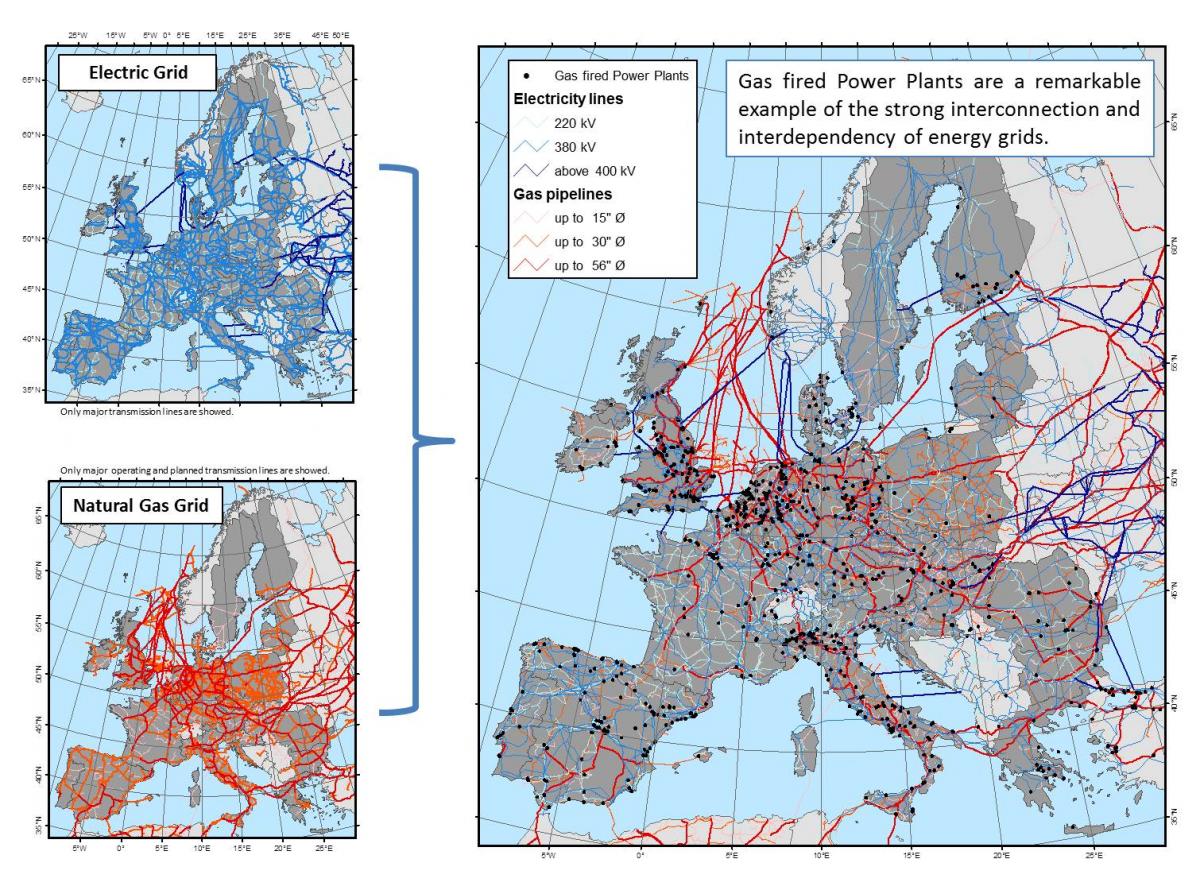We devoted increasing efforts to modelling and assessing interdependencies of gas and power systems. Electricity and natural gas systems have a similar topological structure. Both of them rely on networks, that operate at a transmission level (national and/or trans-national) and at a distribution level (regional or local) to deliver energy from the generation points (electric power plants / gas wells or LNG terminals) to final users. The physical characteristics of the networks entail transmission capacity limitations (electric current or gas mass flow rate) and losses (electric power losses or pressure decreases), and both are driven by node state variables (voltage and pressure).
At the same time, the electricity and gas sectors show some different features. Well-developed storage technologies are installed in the gas sector, while the use of large-scale storage is only being partly used in electricity grid operation. Moreover, the power system dynamics following a given disturbance are generally much faster than those observed in a gas network.
The integrated analysis of the electricity and gas systems is critical as different types of components in the gas systems needs power to operate (ex. electric-driven compressors, valves, regulators etc.) and natural gas is one of the main fuel sources for electricity production. As depicted in the map (Data source: Platts and JRC databases), gas fired power plants are a remarkable example of the strong interconnection and interdependency of energy grids.

We started to investigate the interdependencies between gas and electricity systems in order to identify the operational limitations on one system as a result of failures on the other one. A first effort has been made to provide the decision makers with useful information about the cascading effects of different types of failures on the "system of systems".
Many models and simulations tools are available for analysing separately the electricity or the gas systems, however, integrated analysis experience on both systems is limited. Due to complex nature of both systems the integrated models usually focus on topological analyses and ignore some of the functional/operational details which are very important in short-term vulnerability analyses. Additionally, more detailed models miss the bidirectional interdependencies and focus only on the electricity dependence on gas systems.
We are developing a model via a physics/engineering based approach which considers bi-directional relations between electricity and gas systems. The model hence has capability to assess system security in presence of a fault in one of the two systems.
The model architecture is composed of:
(a) an electricity simulation tool, based upon an AC power flow model including failure effect analysis functions for power flow calculations,
(b) a gas simulation tool, based on a hydraulic model using detailed physics of pipe and non-pipe elements,
(c) the interface module, enabling data exchange between the two systems by means of physical equations.
The model is a discrete event simulation tool and takes into account, with proper assumptions, the different time scales/constants of the systems.
